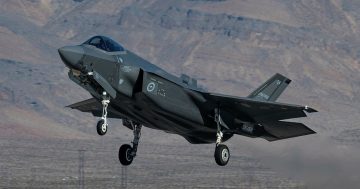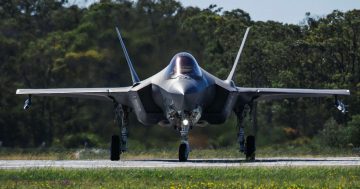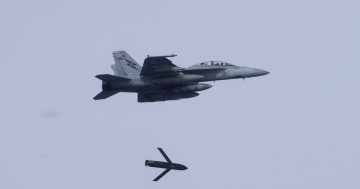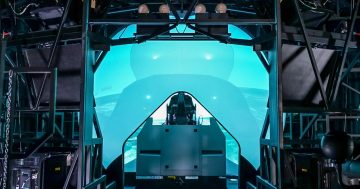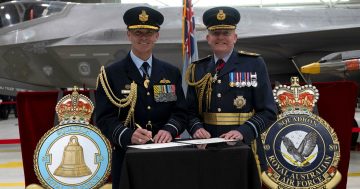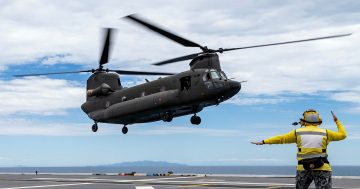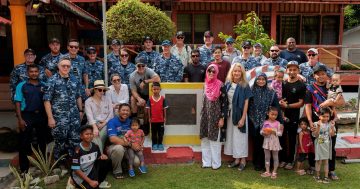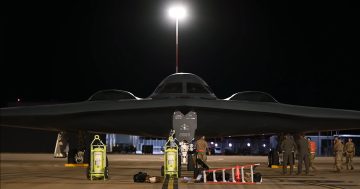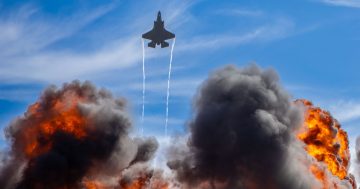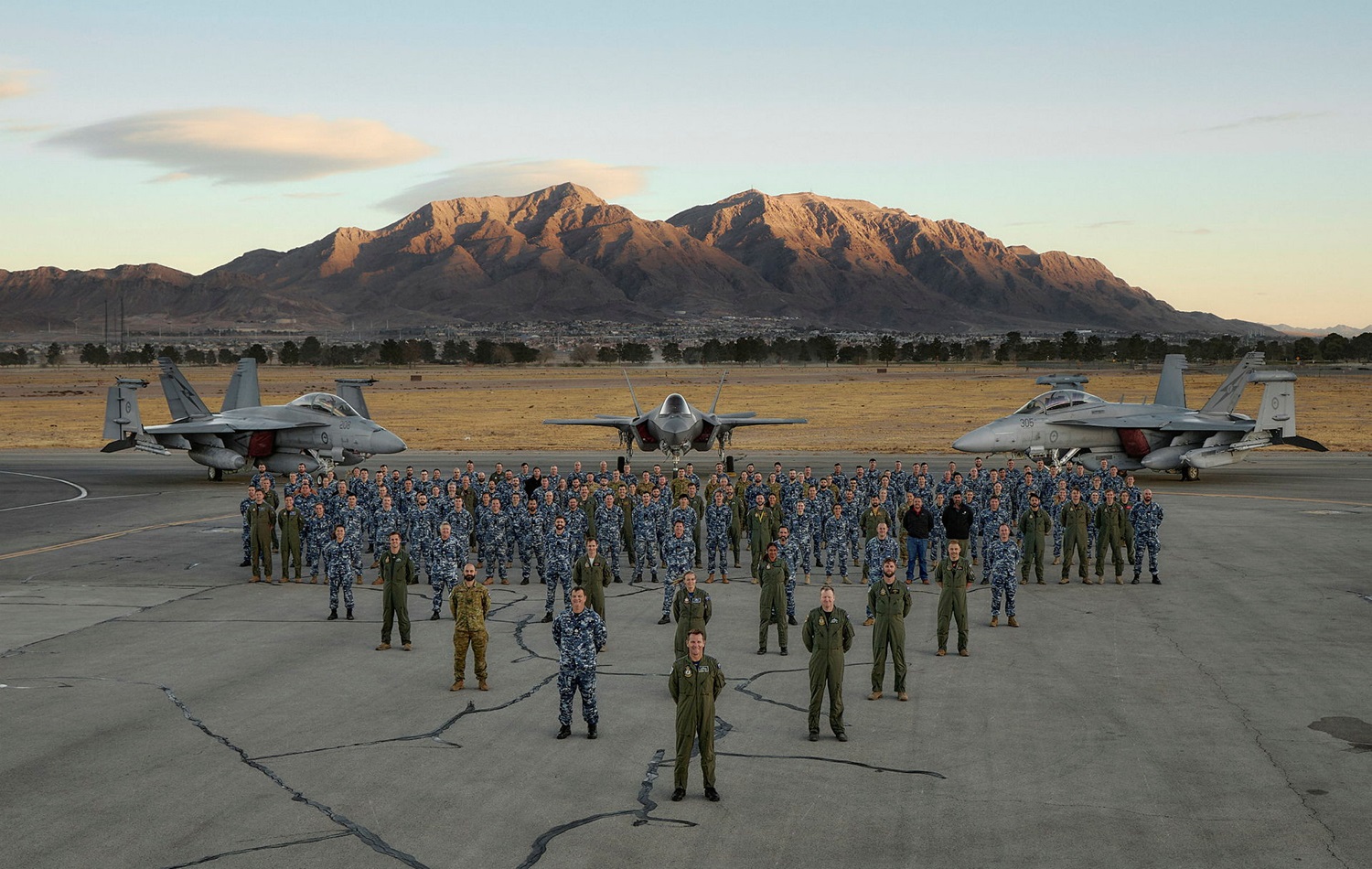
Members of 1, 77, and 6SQNs with their F/A-18F, F-35A, and EA-18G aircraft at Nellis AFB for Red Flag 25-1. Photos: ADF.
The Royal Australian Air Force’s (RAAF) air combat and support squadrons have had a busy start to the year, participating in three major international air combat exercises on both sides of the Pacific.
The first of these was Exercise Red Flag 25-1 which was also attended by the US and the UK’s Royal Air Force.
This first of four Red Flag exercises held each year is reserved for the US’s closest allies, and focuses on high-end warfare against the latest generation anti-air and electronic warfare threats over the vast Nellis Test and Training Range north of Las Vegas in Nevada.
The RAAF deployed 18 aircraft to Red Flag, including six F-35A Lightning IIs from 77 Squadron based at Williamtown near Newcastle, six F/A-18F Super Hornets from 1 Squadron and four EA-18G Growlers from 6 Squadron which are both based at Amberley near Brisbane, an E-7A Wedgetail command and control aircraft from 2 Squadron also based at Williamtown, and 429 aircrew and support personnel.
Red Flag 25-1 also marked the 50th anniversary since the series of exercises started in 1975 to simulate a combat pilot’s first 10 combat missions in a realistic high-fidelity environment to make them more proficient against adversary aircraft and systems.
“Integrating combat capability is what Red Flag is all about and being ready for integrated combat operations with our allies is key to success in any potential future conflict,” US Air Force Colonel Eric Winterbottom said.
“The RAF and RAAF bring not only advanced capabilities, but also a wealth of operational experience that enriches everyone’s experience in this exercise. Red Flag is where we come together as one team to sharpen our edge, build trust, and prepare for tomorrow’s challenges today.”
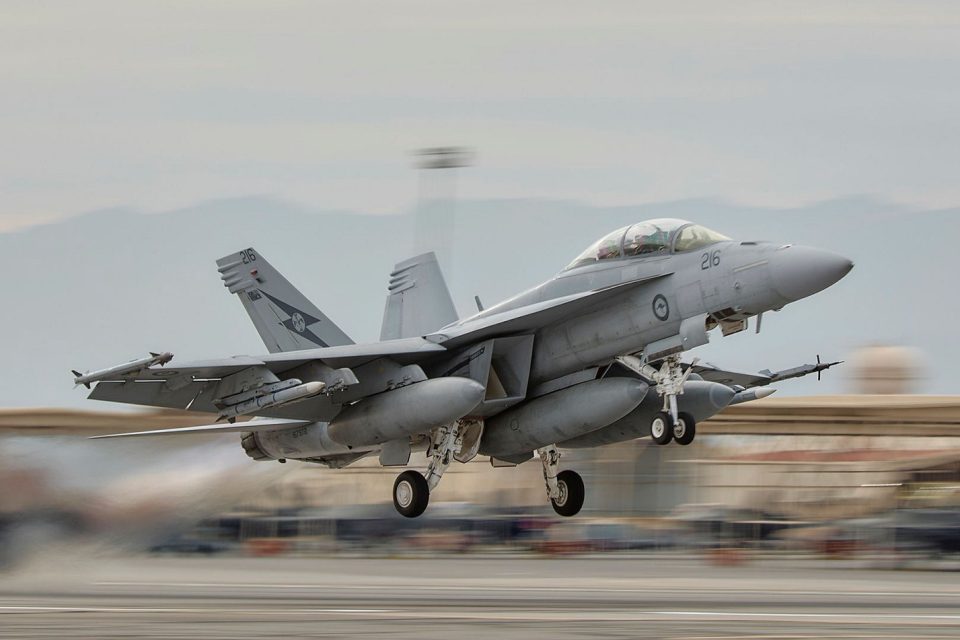
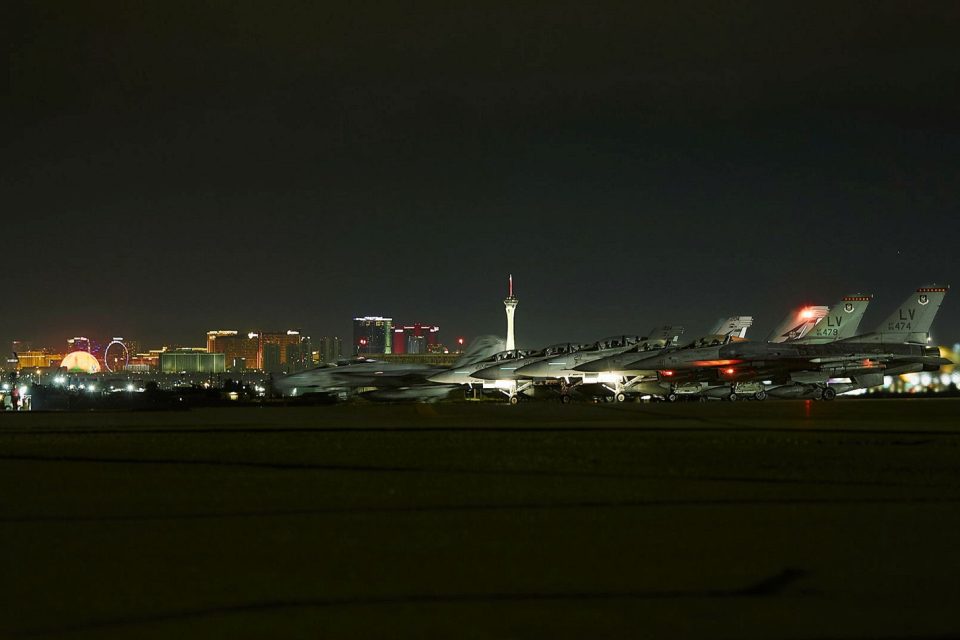

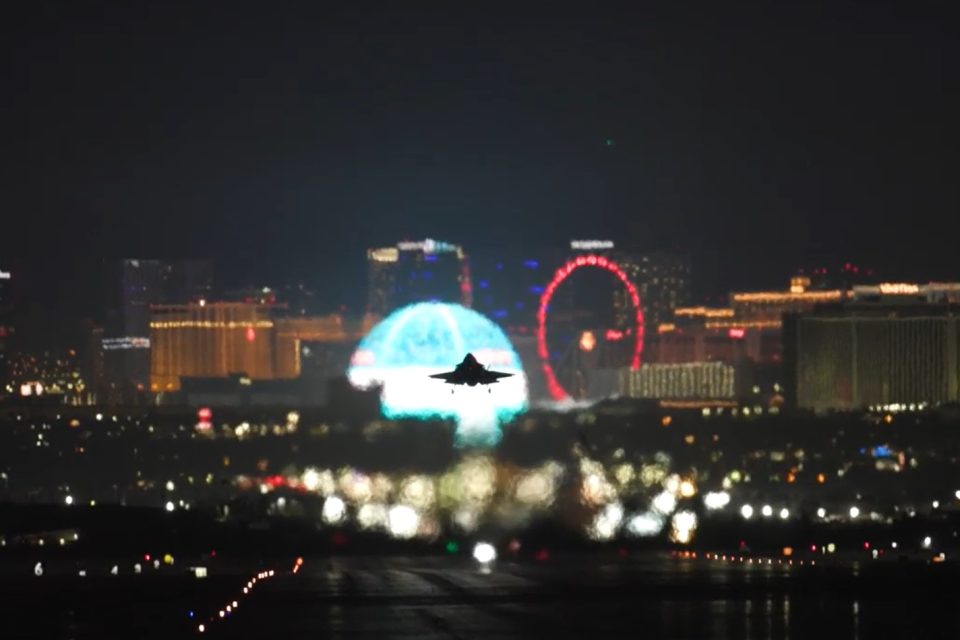
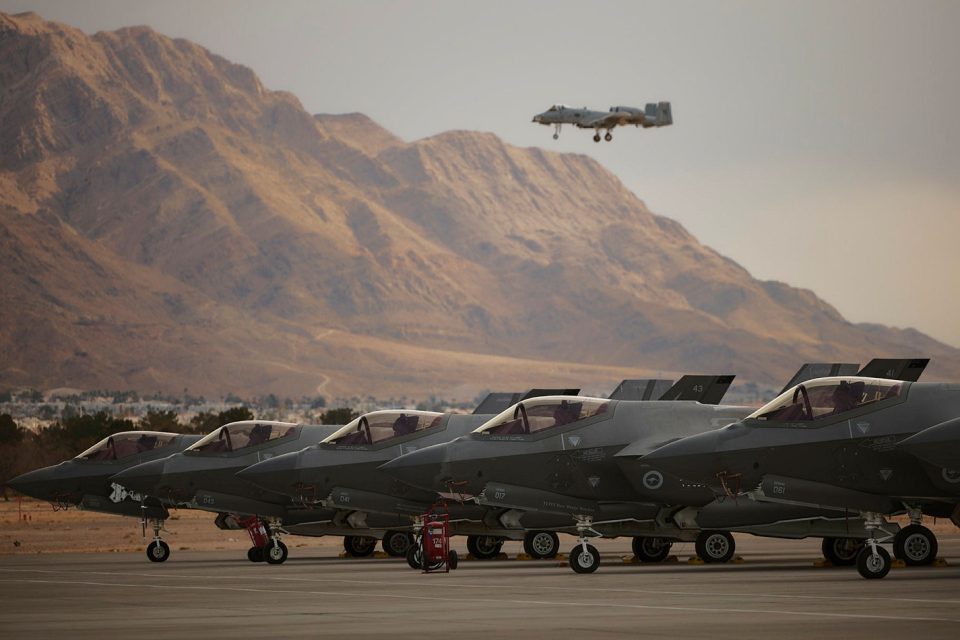
RAAF contingent leader Group Captain Stewart Sweeney said the scenarios ensured the aircrews had the experience to succeed on operations.
“The RAAF has deployed to Nellis Air Force Base for exercises since 1980, and this is the largest and most capable contingent that we’ve deployed for an exercise at Nellis since we first attended,” he said.
“These exercises provide a realistic training environment where we can integrate different capabilities and develop our ability to work with key allies and partners. For many of our aviators, deploying on these exercises is a career highlight, and is not an experience that can be easily replicated elsewhere.”
Straight after Red Flag, the RAAF participated in the follow-on week-long Exercise Bamboo Eagle, a not-too-subtle scenario-based exercise conducted off the California coast aimed at developing tactics and systems to defeat China.
Officially, Bamboo Eagle is focused on agile combat employment – a strategy that ensures forces can quickly adjust, relocate, and sustain operations from multiple locations, even in contested environments. To this end, bases at Nellis, at North Island in San Diego, and Lemoore in Central California, and others were used for the exercise.
“We have had the luxury of operating from safe haven bases for many decades, and modern threats have fundamentally changed that reality,” US Air Force Major General Christopher Niemi said.
“Bamboo Eagle is a big part of helping us figure out how to manage those threats, and training together with our allies improves our ability to face those threats as a unified team.”
Group Captain Sweeney said Bamboo Eagle was unique in scale and complexity.
“Exercise Bamboo Eagle was conducted across the western US and replicated the challenges of conducting long-range missions in the Indo-Pacific, including how we integrate aircraft and other systems across all domains.”
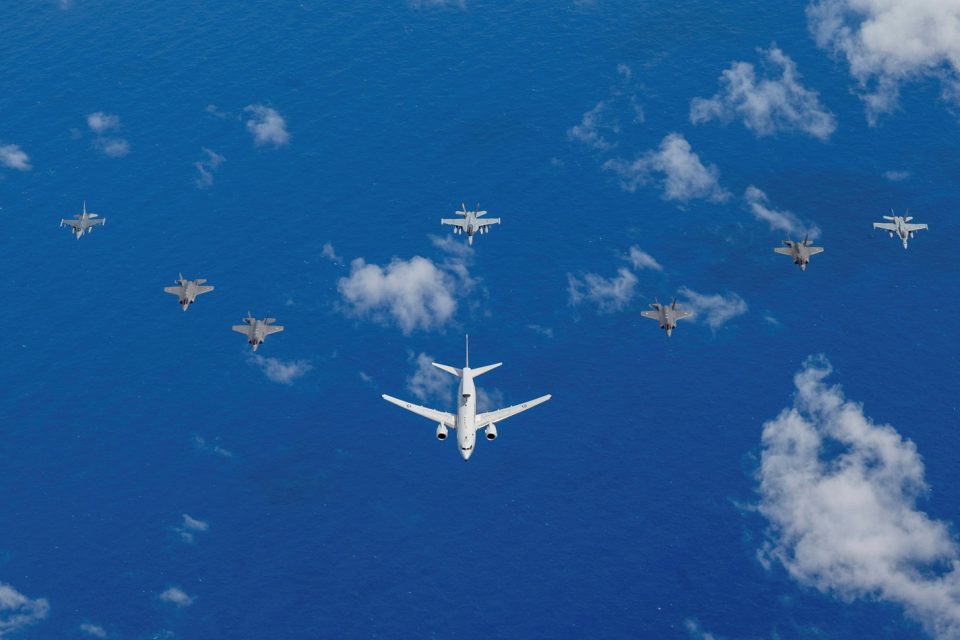
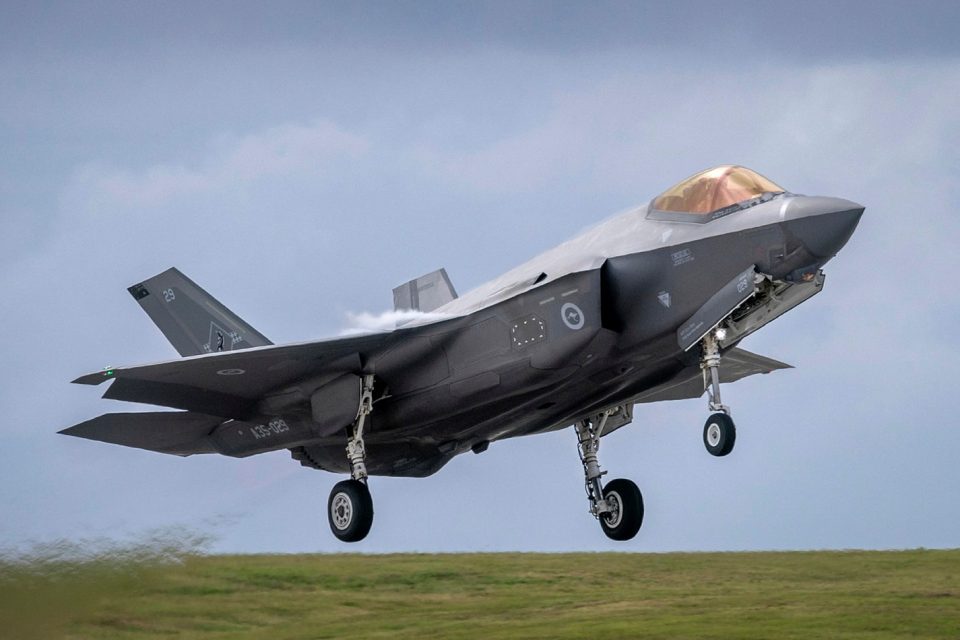
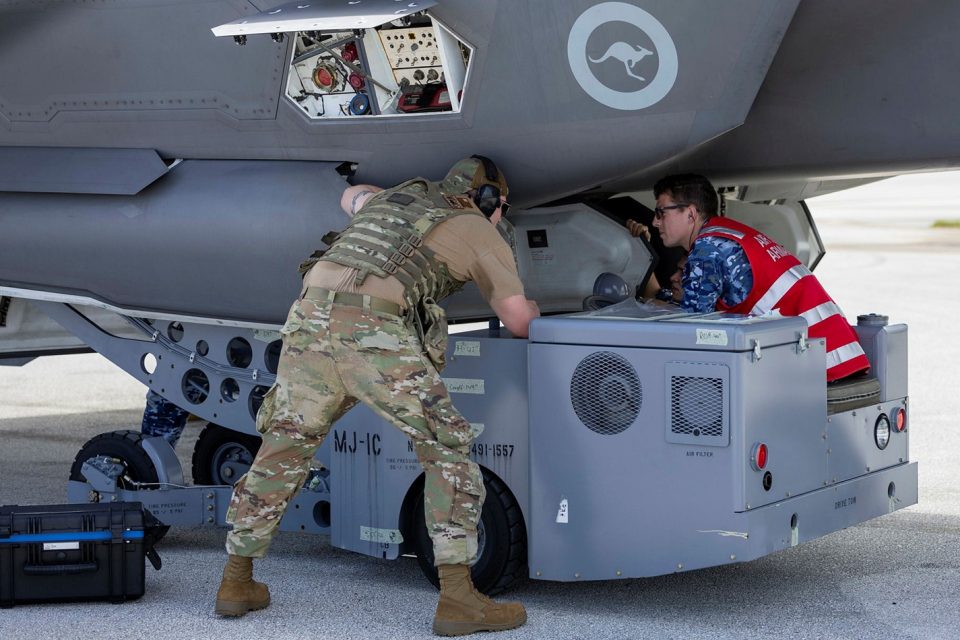
While the Red Flag and Bamboo Eagle were underway in the US, the RAAF also deployed a force to Guam in the western Pacific to participate in Exercise Cope North 25 with the US and Japan, which ran from 3-21 February.
The deployment comprised eight F-35A Lightning II fighters from the Tindal-based 75SQN, along with a KC30A air-to-air refueller from the Amberley-based 33SQN, an E-7A Wedgetail, and 275 aircrew and support personnel.
This iteration of Cope North was the first to be held since the memorandum of intent for air cooperation that was signed by the three countries in July 2024, and focused on developing integration, and understanding and building all three countries’ advanced ‘fifth-generation’ air warfare capabilities.
It also had an emphasis on mission planning and flying interoperability, and opportunities for cultural and ground-based skill role integration and development, including intelligence security forces, logistics.
A total of 85 F-35As and F-35Bs from the RAAF, US Marine Corps, US Air Force, and Japan Air Self Defense Force participated.
The RAAF’s Cope North Exercise Director Group Captain Daryl Porter said the event was the first in a journey towards greater integration in the Indo-Pacific.
“This is the first F-35 large force engagement between Australia, Japan and the United States that will exercise all three nations’ fifth [generation] air warfare capabilities and whole-of-force integration in complex yet realistic scenarios,” he said.
“The most exciting part of this exercise is that it allows the RAAF to demonstrate its readiness to deliver highly effective air power with enhanced lethality and survivability, and how this is further enhanced when operating with our key allies and partners.
“Since we arrived, it has been tremendously pleasing to observe our aviators from all three countries seamlessly transition to a fully integrated workforce that has consistently demonstrated unprecedented interoperability across a number of roles, skillsets and capabilities.”


